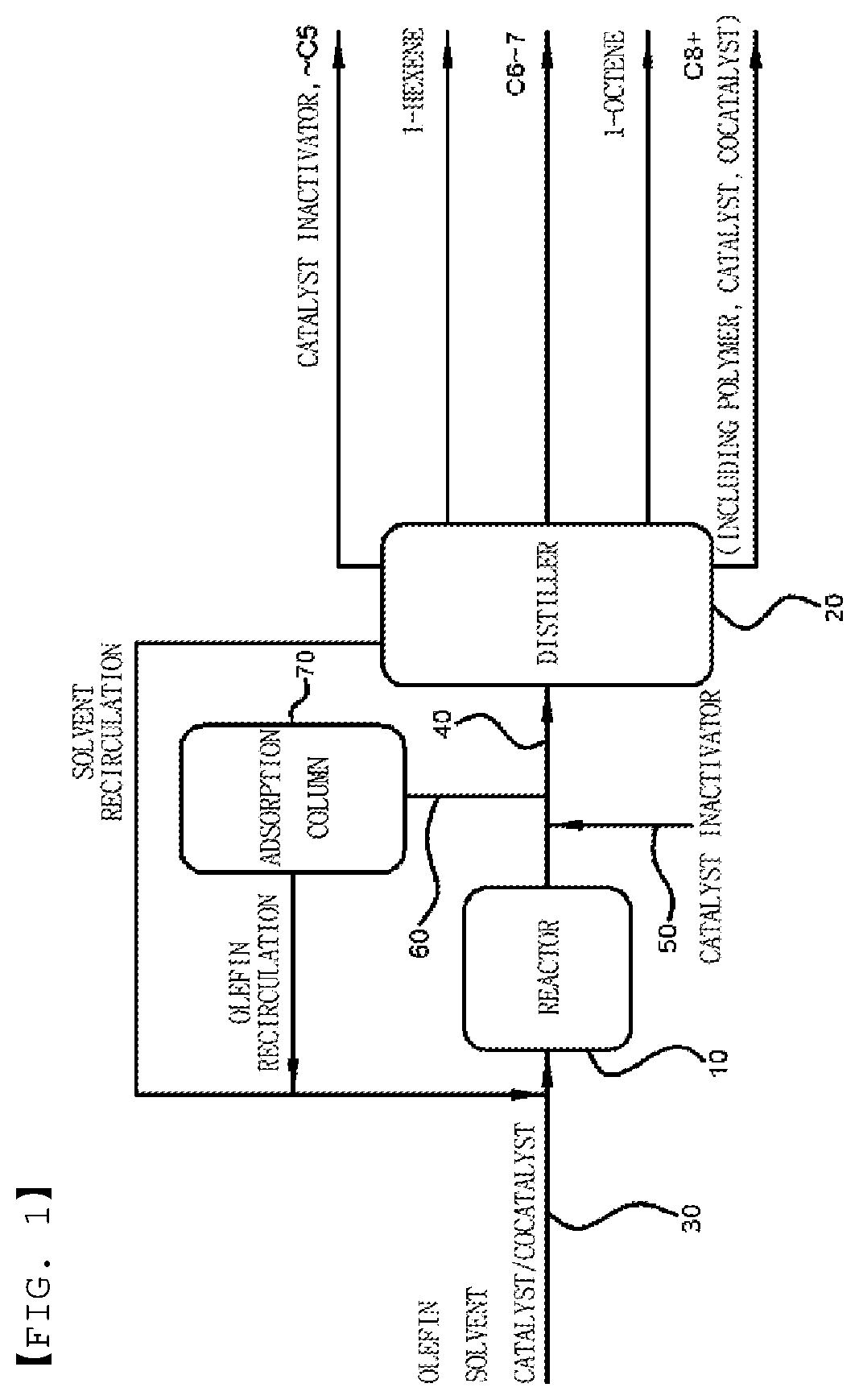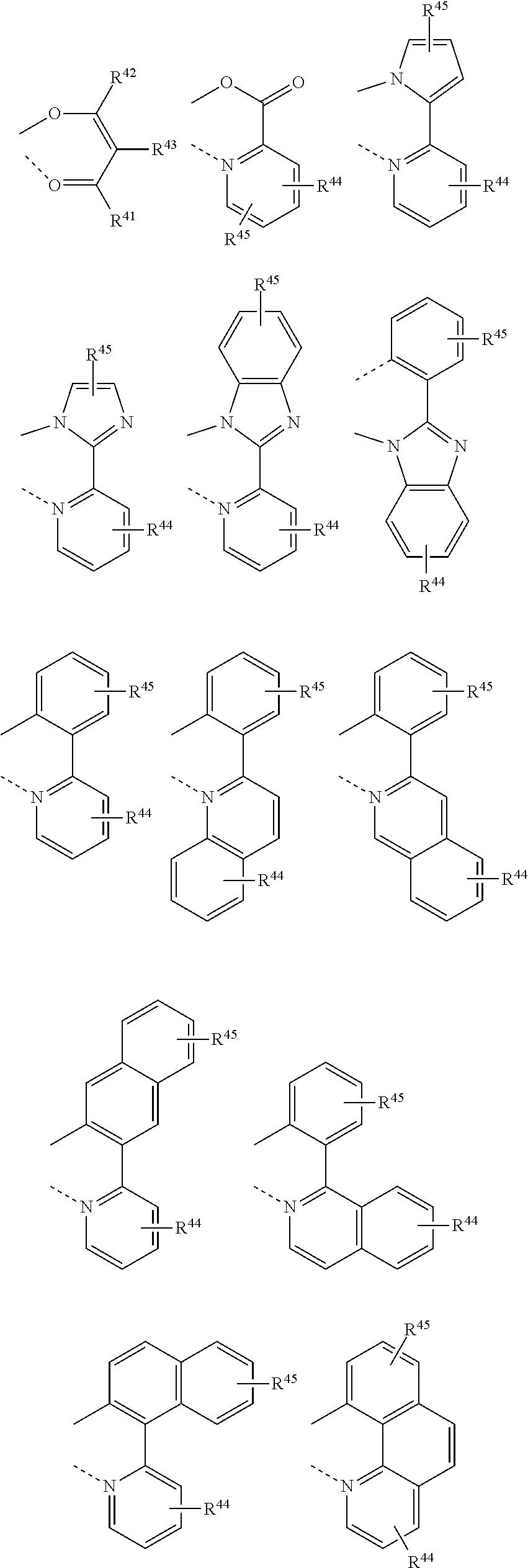Method for Oligomerizing Olefins
- Summary
- Abstract
- Description
- Claims
- Application Information
AI Technical Summary
Benefits of technology
Problems solved by technology
Method used
Image
Examples
example 2
[0118]A reaction product was obtained in the same manner as in Example 1, except that CO gas was used instead of the CO2 gas. 20 mL of the filtered product was heated to 100° C. for an hour in a separate flask. GC-FID analysis was performed using heptane as the internal standard, and a change in purity of 1-octene was confirmed. The results are summarized in the following Table 1.
example 3
[0119]A reaction product was obtained in the same manner as in Example 1, except that an O2 / N2 mixed gas (5% by weight of O2 and 95% by weight of N2) was used instead of the CO2 gas. 20 mL of the filtered product was heated to 100° C. for an hour in a separate flask. GC-FID analysis was performed using heptane as the internal standard, and a change in purity of 1-octene was confirmed. The results are summarized in the following Table 1.
example 4
[0120]To evaluate the separation efficiency of the produced linear alpha olefins (LAOs) according to the type of the catalyst inactivator, a process for separating a catalyst deactivator was simulated using ASPEN PLUS V8.8 (AspenTech). Assuming that up to C20 components were also used as the product, after CO2 gas serving as the catalyst inactivator was added to a reactor effluent, compositions of a mixture flowing in the first distillation column of five distillation columns to separate products according to the boiling points thereof were set as listed in the following Table 2. The number of distillation column stages was set to 50. The heat duty (MMkcal / hr, 1 MMkcal=106 kcal) of the condenser required to separate the catalyst inactivator in the mixture at 0.1% or less, the heat duty (MMkcal / hr) required for the reheater, and the purity of the reaction product were calculated. The results are summarized in Table 3.
PUM
| Property | Measurement | Unit |
|---|---|---|
| Temperature | aaaaa | aaaaa |
| Temperature | aaaaa | aaaaa |
| Temperature | aaaaa | aaaaa |
Abstract
Description
Claims
Application Information
 Login to View More
Login to View More - R&D
- Intellectual Property
- Life Sciences
- Materials
- Tech Scout
- Unparalleled Data Quality
- Higher Quality Content
- 60% Fewer Hallucinations
Browse by: Latest US Patents, China's latest patents, Technical Efficacy Thesaurus, Application Domain, Technology Topic, Popular Technical Reports.
© 2025 PatSnap. All rights reserved.Legal|Privacy policy|Modern Slavery Act Transparency Statement|Sitemap|About US| Contact US: help@patsnap.com



